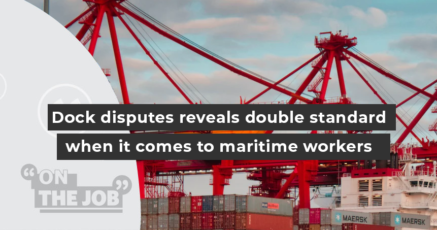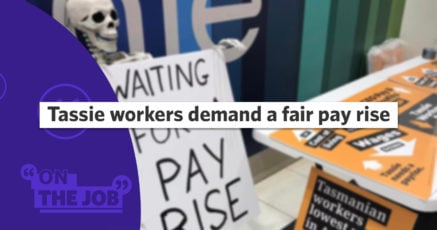There are some things that are easy to understand.
Like the simple principle that you if two people are doing the same job they should get the same pay.
It’s easy to understand, and for the Morrison government, it’s been just as easy to ignore. The growing use of labour-hire operators by employers has become a scourge in Australia.
It’s a business model that is used by bosses to undercut pay and conditions for workers, and it drives a race to the bottom for employers looking to dodge their responsibilities to their workforce.
Last week, Federal Opposition Leader Anthony Albanese tabled a private members bill in parliament that would ensure that workers doing the same job, for the same employer, are paid the same.
“Workers who do the same work for the same employer should be paid the same. We have to stop this business model that allows labour-hire operators to create a cheaper and more insecure workforce,” said Secretary of the Australian Council of Trade Unions, Sally McManus.
“Insecure work is a national crisis and the Federal Government can and must take action to address it. Labor is showing that government can make a real difference for working people.
“We welcome the Bill being put forward by the ALP and call on members from all parties to support this common-sense action to prevent working people being ripped off,” Ms McManus said.
Anthony Forsyth is Professor of Workplace Law at RMIT University in Melbourne. He told ‘On the Job’ that the proposed changes in the Labor leader’s private members bill was an important reset for labour laws.
“I think it’s a really important reform in order to improve the job security and wages and conditions of workers in Australia.”
“ For too long, labour-hire employees have been treated like a second class group of citizens. A lot of them have ended up on long term labour-hire engagements as casual workers for years on end, with no job security, lower wages and conditions than the people working directly alongside them.”
Professor Forsyth sees the increased use of labour-hire firms as a perversion of the original intent of the practice.
“It (labour-hire practice) evolved from the original use of “ temps”, office staff from the 1950s.
“ That was all about filling a gap, somebody goes on leave, or somebody gets pregnant and is away from the workforce for a period of time you need someone to replace them. That’s what temp agencies were designed to do.”
“ The proliferation of labor hire as we now see it is a product of neoliberalism.”
“It’s coincided with the erosion of secure employment in favour of casual work and independent contracting. Labour-hire is just another form of work which seriously disadvantages employees.”
Professor Forsyth conducted an inquiry into labour-hire practices for the Victorian Labor state government in 2016. He said that what it discovered was that labour-hire practices had transformed workplaces that could and should offer secure employment to its workers.
“ Around 80% of labour-hire staff in Australia are engaged as casual, a smaller proportion as independent contractors, and very few of them as permanent employees.”
“ 30 years ago, most people in a warehouse would have been direct employees of the business that’s running it. Originally, you would have had labour-hire being used to meet fluctuations in demand.”
“What’s happening now at places like Amazon, there are very few directly (employed) core workforce employees. Nearly all workers in those type of workplaces – and food manufacturing is another example – are now long term, casual labour-hire workers.”
The ramification for workers is significant. Safety practices suffer as employers uncouple themselves from responsibility for employee training leaving workers vulnerable.
In the event, a worker is injured the employer solution is simple – just pick up the phone to their labour-hire provider and ask for the worker not to be sent back to the job.
For workers without permanency, simple things like establishing a credit record for renting a home, securing a loan or buying a car become near on impossible.
Workers are left in an employment twilight zone. Professor Forsyth brushes off employer rhetoric about “flexibility” in labour practice being of great benefit for workers engaged in labour-hire work.
“ We know from a mountain of evidence about both the gig economy and labour-hire that the flexibilities are all one way and it’s in the hands of capital.”
“There are workers who prefer flexible forms of engagement but what I heard in that inquiry over and over again were stories of workers who had been working as labour-hire casuals for six and seven years on end and they just wanted a crack at a permanent job.”
‘It’s always workers who are bearing the cost of the way work is arranged. If Labor gets into government (the changes outlined in the Albanese bill) should be a major priority.”
Would you like to share your work story with On the Job? We’d love to hear from you. Email us.













SHARE:
Ending the labour-hire racket